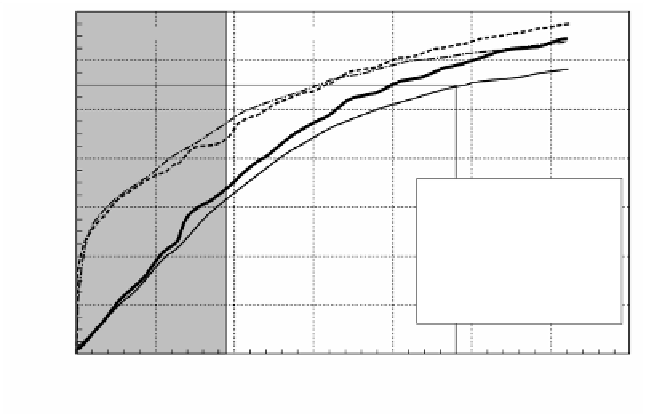Environmental Engineering Reference
In-Depth Information
1400
F1 Mode
F2 Mode
1200
1000
Heat input (including the sensible heat of air)
:930kW (800,000kcal/h) constant
800
Furnace temperature
(Normal temperature air)
Steel average
(Normal temperature air)
600
400
Furnace temperature
(High temperature air)
Steel average
(High temperature air)
200
197min.
238min.
0
0
50
100
150
200
250
300
350
Time, min.
FIGURE 5.18
Comparison of the rate of temperature rise under the constant heat input of
930 kW.
400
Ts3,max-Ts2,min (High temperature air)
Ts3,max-Ts2,min (Normal temperature air)
350
300
Ts3
Ts2
Ts1
250
200
Flame
150
100
50
0
0
50
100
150
200
250
300
350
400
Heating time, min.
FIGURE 5.19
Change of steel surface temperature with time.
1. Effect of flame locations
To change the locations where the flames were formed, combustion in the direction
of the furnace width (burners C, D, E, and F) was established so that the flames
were formed beneath the skids. As a result, the steel temperature near the skids rose
even under normal combustion, and the ion current that shows the existence of flames
also increased, but ∆
T
was larger compared with that of the combustion with high
temperature air (
Figures 5.21
and
5.22
).
To enhance the dilution of air jet by the













Search WWH ::

Custom Search